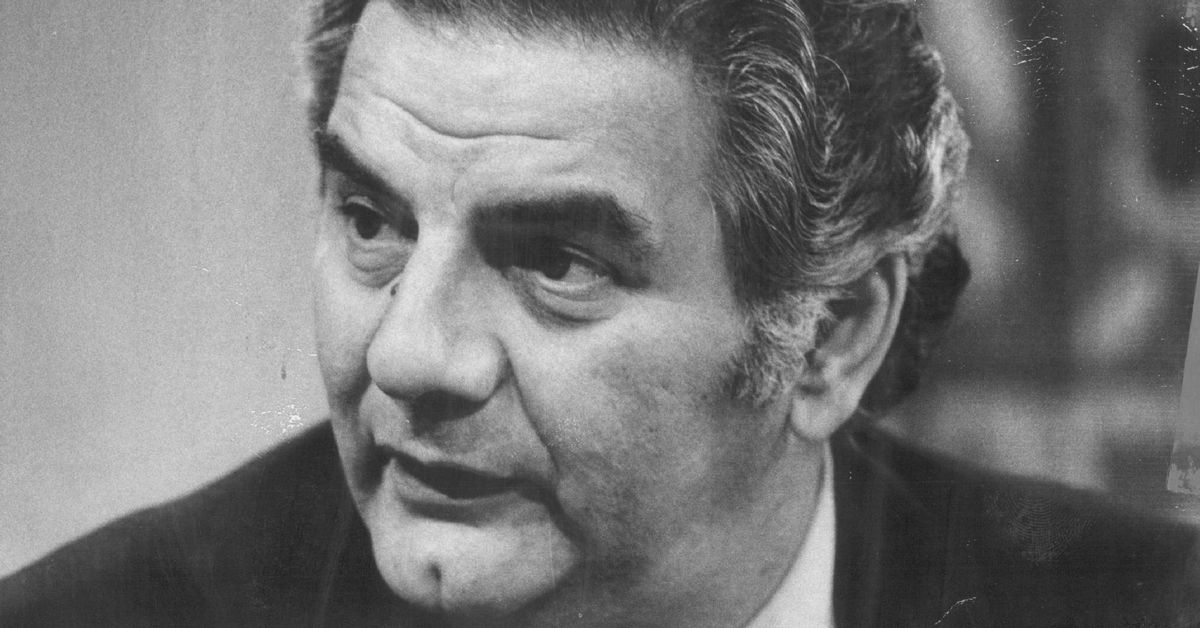
LAS VEGAS — A fuming Lem Banker stomped into Jimmy “The Greek” Snyder’s Hollywood Race and Sports Book downtown in the 1960s. Snyder stood on the other side of the counter.
“Where’s my money?” said Banker.
“Don’t have it,” Snyder said.
Banker, a sports-betting legend and former boxer who trained religiously, moved toward Snyder, who grabbed a baseball bat. Banker hurdled the counter and discarded the weapon. A struggle ensued.
They slipped behind a partition, into an office. Banker left with his loot, maybe $5,000, fellow pro Ron Boyles said.
Eyewitness Harold Kulic, a longtime El Cortez ticket writer known as ‘‘Hungry Hal,’’ relayed those theatrics to Boyles during the inglorious stand-alone era of Vegas sportsbooks.
“Everyone called him Hal and thought that was his name,” Boyles said. “He loved to eat. Never paid for a meal. He’d shop for the best baseball numbers, and everyone comped him meals.”
In those decades, Vegas punters patronized either illegal bookies or stand-alones like Snyder’s. The legal shops continued, barely at times, until less onerous taxes led to wider acceptance and today’s sports-betting bacchanal.
For the first time, Nevada did $1 billion in monthly sports-betting business, the handle, in October, a month after New Jersey became the first state to bust a billion. The profit, or hold, usually hovers around 5%.
Industry experts expect Illinois to soon join that exclusive 10-figure fraternity.
On Dec. 9, Maryland became the 31st U.S. jurisdiction (30 states, plus Washington, D.C.) to legalize sports betting. Sixteen additional states are discussing legislation.
Since the U.S. Supreme Court let states pursue their own sports-gambling ambitions, in 2018, more than $82 billion in business has been generated nationally, according to industry watchdog SportsHandle.
For decades, a legal single-game sports bet could be placed only in Nevada, which had a 1974 handle of $8 million.
At times, there were only three stand-alones in Las Vegas.
SAWDUST JOINTS
Herbie Hoops, Dick the Pick, Bobby the Tower, Hunchback Bobby, Crazy Louie, Jolly Joe, Fat Dave, Michael the Weasel and Fast Eddie were some of the eccentrics of that unglamorous period.
“Characters,” Boyles said, “who made those holes-in-the-wall interesting.”
They’d frequent the Rose Bowl, Derby, Saratoga, Santa Anita, Hollywood or other books, either on the Strip or downtown. Longtime handicapper Dave Cokin recalls veritable melees at outside pay phones.
Nevada legalized gambling in 1931. Sports betting, however, was not popular due to reported fixes, allegations of nefarious activities and thorny taxes.
In 1951, a 10% federal tax on sports betting at once provided regulation and shuttered businesses. In 1974, that was cut to 2%; in 1983, to its current ¼ of 1%.
The Union Plaza, in 1975, became the first hotel-casino to incorporate a book on its premises. A year later at the Stardust, Chicago native Frank “Lefty” Rosenthal — who had run the Rose Bowl — developed the “theater-style” setting that became de rigueur.
Those stand-alones kept the business afloat between the early 1950s, when politicos nearly twice outlawed bookmaking, and the mid-70s.
“Very inhospitable places,” Rosenthal said in “Casino,” Nicholas Pileggi’s 1995 book. “Sawdust joints. I had spent my life in those places and knew what they needed.”
RUNYONESQUE
In June 1976, at Bill Dark’s Del Mar in North Las Vegas, well-known Vegas hothead Cryin’ Kenny had bet on Game 5 of the Suns–Celtics NBA championship series to finish Under its projected total.
The triple-overtime game sailed Over. Before it ended, the wild-eyed Texan had left and returned with a revolver, blasting six bullets into the Zenith television hanging from the ceiling.
Kenny returned the next day, South Point sportsbook director Chris Andrews wrote in his “Then One Day . . .” book — and apologized to Dark who, after making Kenny pay for the TV, took Kenny’s bets. Business as usual.
South Point sports marketing director and Vegas institution Jimmy Vaccaro said the last of the stand-alones were Little Caesar’s and Churchill Downs, at opposite ends of a simple mall.
In the late 1990s, that Strip stretch became Paris Las Vegas.
Tommy Lorenzo, a 49-year-old Southern California resident, slipped into Little Caesar’s, out of curiosity, when he was 19. The casino books all carded him. But at LC, he bought a beer in a 16-ounce Dixie cup for a dollar.
“The characters mulling around,” Lorenzo said, “could have inspired the cantina scene from ‘Star Wars.’ I didn’t get carded and felt like a king in that place, which was very much a dive.”
Boyles called it ambience.
“Runyonesque characters in every corner. At the Rose Bowl, they faked a robbery; they had lost all kinds of money and couldn’t pay people. Handwritten tickets. Could make a movie about them.”
The Rose Bowl, under Gary Austin, never reopened. Horse races were recreated, after the fact, from disseminator Joe Deluca reading ticker-tape over speakers.
“Straight out of ‘The Sting.’ He’d come on the microphone,” Boyles said, “with this old race-track voice and give the call. Tremendous.”
Vegas pillar Michael “Roxy” Roxborough frequented the Santa Anita. In an email, he called the stand-alones pigpens. You would never bring a lady to one of those.
He lauded casinos operating books.
“They had little tolerance for the insalubrious characters that were the old joints’ habitué. In plain language, you couldn’t stand on the chairs and throw beer bottles at the TV anymore.”
"book" - Google News
December 18, 2021 at 08:00PM
https://ift.tt/3miDy66
The opening of the book: Sports gambling’s humble beginnings - Chicago Sun-Times
"book" - Google News
https://ift.tt/2Yv0xQn
https://ift.tt/2zJxCxA
Bagikan Berita Ini















0 Response to "The opening of the book: Sports gambling’s humble beginnings - Chicago Sun-Times"
Post a Comment